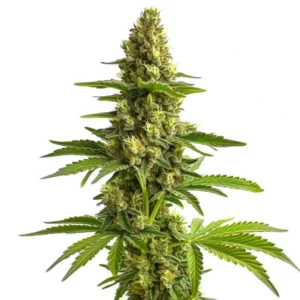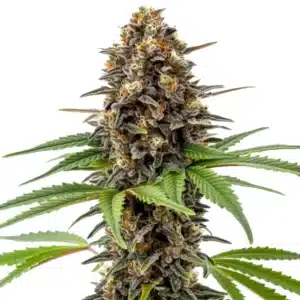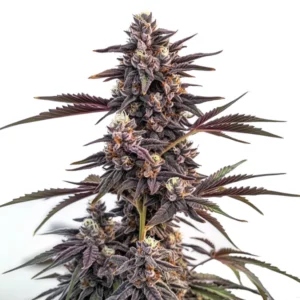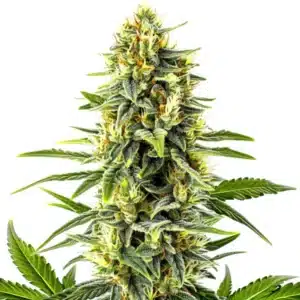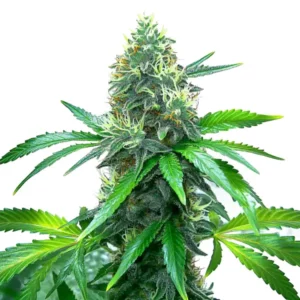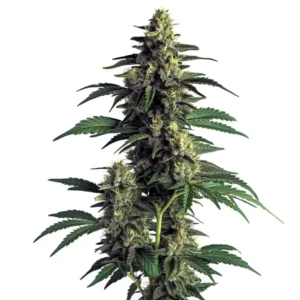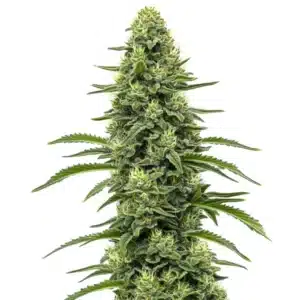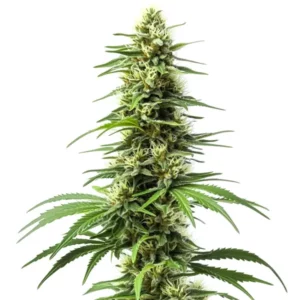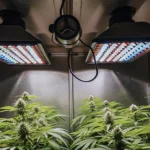
Choosing Grow Lights Based on Photoreceptor Response
When you start thinking about grow lights, it’s all about the light spectrum and how it affects plant growth. For many cannabis growers, choosing grow lights based on photoreceptor response can make all the difference. Photoreceptors in plants are like the eyes that see light. They help plants know when to grow, flower, and produce seeds. Picking the right light ensures your plants get what they need without unnecessary energy use.
Photoreceptors respond to different light wavelengths. Blue light tends to promote leafy growth, while red light supports flowering. By choosing LED grow lights for photoreceptor activation, you can tailor the light spectrum for specific growth stages. This ensures your cannabis plants, like those from Blimburn Seeds, thrive through every phase.
Recommended Strains
Bruce Banner #3
|
|
THC | 20% - 29% (High) |
|
|
Type | Feminized |
|
|
Yield | Medium |
|
|
Phenotype | 50% Indica / 50% Sativa |
Girl Scout Cookies
|
|
THC | 18% - 25% (Medium) |
|
|
Type | Feminized |
|
|
Yield | High |
|
|
Phenotype | 60% Indica / 40% Sativa |
Many first-time cannabis seed buyers ask how to choose the best spectrum grow lights for photosynthesis. The secret lies in knowing the plant’s photoreceptors and matching them with the right light. This isn’t just about more light but about smarter light. Let’s dive into the details.
Photoreceptors and Their Role in Plant Growth
Photoreceptors like phytochromes and cryptochromes play key roles in how plants use light. Phytochromes absorb mostly red and far-red light. This affects everything from seed germination to flowering. When you use tailored grow lights for specific photoreceptor response, you optimize these processes.
Cryptochromes, on the other hand, respond to blue light. This type of light encourages leaf growth and stem elongation. For cannabis strains such as the Bruce Banner 3 from Blimburn Seeds, using optimal grow lights for plant photoreceptors means healthier, more robust plants. Balancing these light types helps maximize your yield.
The science behind photoreceptors is fascinating. These proteins have evolved to sense changes in light conditions, allowing plants to adapt to their environment. By knowing how they function, you can make more informed decisions when choosing grow lights based on photoreceptor response. This can significantly affect the overall health and productivity of your plants.
Aside from phytochromes and cryptochromes, other photoreceptors like phototropins and UVR8 also play roles in plant development. Phototropins are involved in phototropism, which is the directional growth of plants towards light. UVR8 responds to UV-B light, helping plants acclimate to UV stress. Recognizing these roles can further refine your approach to selecting the best spectrum grow lights for photosynthesis.
Promos & Deals
Choosing LED Grow Lights
LED grow lights have become a favorite among both novice and experienced growers. They offer flexibility in spectrum options, making them perfect for photoreceptor-sensitive grow light options. With LEDs, you can fine-tune the spectrum to match the needs of your plants at different stages.
When choosing LED grow lights for photoreceptor activation, consider the growth stage of your plants. During the vegetative stage, emphasize blue light. For the flowering stage, red light should dominate. This way, you can ensure each photoreceptor is activated at just the right time, optimizing plant growth.
Another advantage of choosing LED grow lights is their longevity. LEDs generally last longer than other types of grow lights, which reduces the need for frequent replacements. This durability, combined with their energy efficiency, makes them a cost-effective choice for growers aiming to maximize yield with minimal expense.
Moreover, LEDs generate less heat compared to traditional grow lights, reducing the risk of heat stress on your plants. This allows you to place the lights closer to the canopy, increasing light penetration and ensuring that all parts of the plant receive adequate exposure. This is especially beneficial when fine-tuning tailored grow lights for specific photoreceptor response. For growers, Choosing Grow Lights Based on Photoreceptor Response is key to optimizing photosynthesis and maximizing yield.
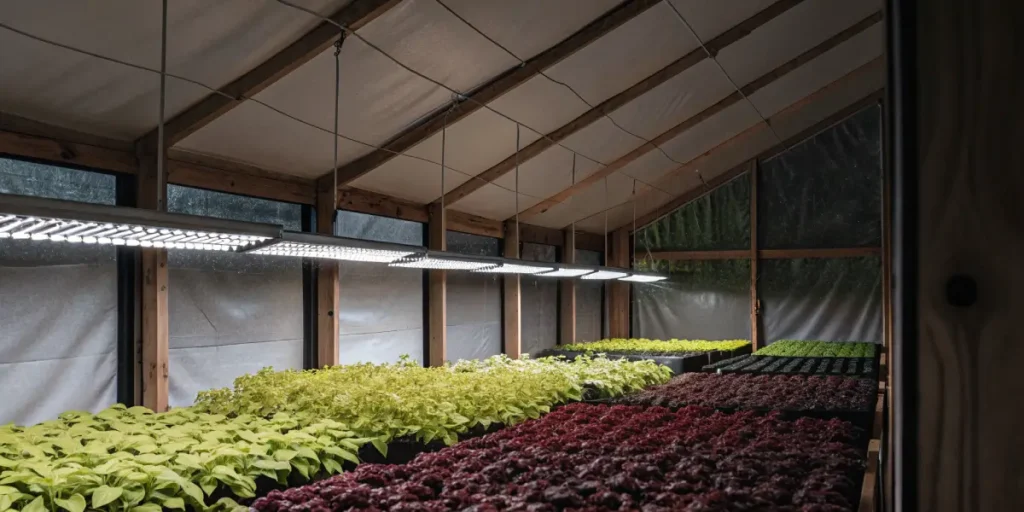
Real-Life Example: Cannabis Strains and Light Needs
Take the popular Girl Scout Cookies strain. During its growth cycle, it benefits from a balanced light spectrum. Start with a higher intensity of blue light during its early stages. Then, as it matures, increase the red light to stimulate flowering.
Similarly, the Amnesia strain thrives under a well-adjusted spectrum. Early on, focus on blue light to help it develop strong roots and leaves. Switch to a red-heavy spectrum as it starts flowering, ensuring a potent harvest. Choosing grow lights based on photoreceptor response can lead to lush, productive plants.
Certain strains, like Northern Lights, may have specific light spectrum requirements. This strain is known for its resilience and can benefit from a thoughtfully adjusted light spectrum. By experimenting with different light intensities and wavelengths, you can find the optimal grow lights for plant photoreceptors that suit this strain’s unique needs.
For strains like OG Kush, balancing the light spectrum is crucial for maximizing potency and yield. During the vegetative stage, increase blue light to encourage bushy growth. As flowering approaches, transition to more red light to boost bud development. This tailored approach helps achieve the best results for each strain.
Benefits of Tailored Grow Lights
Using tailored grow lights for specific photoreceptor response offers several advantages. First, it enhances plant health. By providing the exact spectrum plants need, you reduce stress and promote vigorous growth.
Second, energy efficiency improves. Customizing your light spectrum means you’re not wasting energy on unused wavelengths. This is especially valuable for strains like Pineapple Express, allowing you to save money while still achieving excellent results.
A third benefit is the ability to influence the plant’s morphology. By adjusting the light spectrum, you can control the height and structure of your plants, making it easier to manage them in a confined space. This control is particularly useful in indoor growing environments where space optimization is key.
Additionally, using the best spectrum grow lights for photosynthesis can lead to higher quality yields. By ensuring that each growth stage is supported with the right light, you enhance the plant’s ability to produce cannabinoids and terpenes, resulting in a more potent and flavorful product.
Practical Steps for Grow Light Selection
Start by identifying the growth stage of your cannabis plants. Each stage has unique light requirements. Purchase adjustable LED lights to easily switch between different light spectrums.
Consider the strain you are growing. Some strains require more blue light, while others thrive under red light. Consult reliable sources like Blimburn Seeds for specific strain requirements. This ensures you are always using optimal grow lights for plant photoreceptors.
Besides to spectrum, consider the intensity and duration of light exposure. Adjust these parameters based on the plant’s response to ensure it receives the right amount of light each day. This careful management helps prevent issues such as light burn or inadequate growth.
It’s also important to maintain a consistent light schedule. Cannabis plants thrive on regularity, so using timers to automate your lighting system can help maintain consistency. This practice supports healthy growth and maximizes your plants’ potential.
Maintaining Your Grow Lights
To keep your lights performing well, regular maintenance is key. Clean your LED panels regularly to ensure they provide consistent light output. Dust and residue can block light, reducing effectiveness.
Check the lights for any signs of wear or malfunction. Replacing faulty lights promptly ensures your plants receive uninterrupted care. This attention to detail can make a significant difference in the health of your cannabis plants.
Regular maintenance also includes checking the alignment of your lights. Ensuring they are positioned correctly allows for even light distribution across your plants. This helps avoid hotspots and ensures that all areas of the plant receive adequate light.
Another aspect of maintenance is monitoring the temperature and humidity levels in your grow space. Proper ventilation can help manage these factors, ensuring your lights don’t contribute to excessive heat, which can stress your plants and reduce yield.
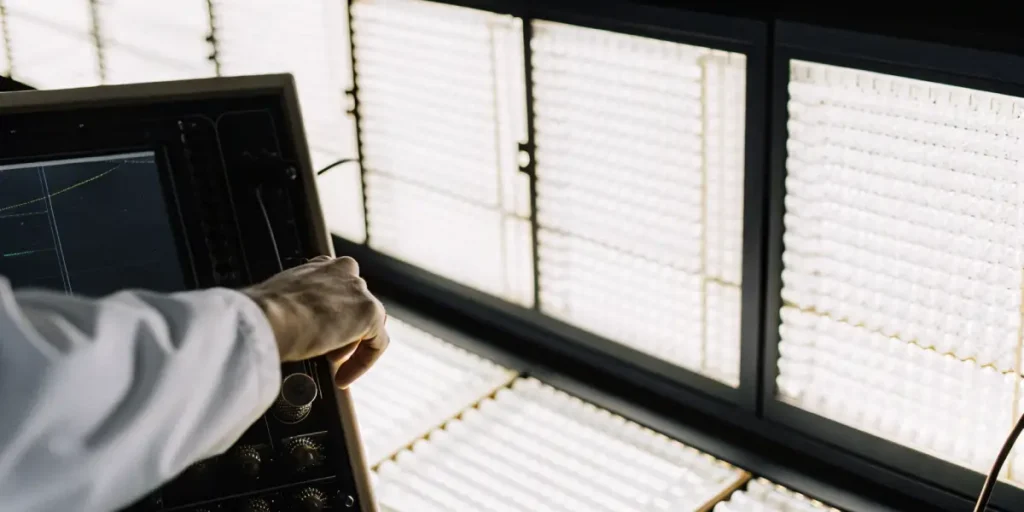
FAQs
What are the best grow lights for cannabis?
The best grow lights for cannabis are those that cater to the plant’s photoreceptors. LED lights are highly recommended due to their customizable spectrum. They allow you to adjust the light according to the plant’s growth stage, ensuring optimal development.
LEDs are energy-efficient and versatile. They can be tailored to provide the specific wavelengths needed for different growth phases. This flexibility makes them a top choice for both novice and seasoned growers.
Besides to LEDs, some growers also use a combination of different light types to mimic natural sunlight more closely. This approach can provide a broader spectrum, covering all the photoreceptor needs of your plants. However, it requires careful management to balance the different light sources effectively.
When selecting the best grow lights for cannabis, consider factors such as your grow space, budget, and the specific strain you’re cultivating. This ensures that you choose the most suitable lighting solution for your unique growing conditions.
Why is the light spectrum important for cannabis growth?
The light spectrum is crucial because it directly affects how plants grow. Different wavelengths trigger different responses in the plant’s photoreceptors. Blue light is essential for vegetative growth, while red light encourages flowering.
By knowing these needs, growers can select the best spectrum grow lights for photosynthesis. This knowledge helps in optimizing plant health and maximizing yields, ensuring that each stage of growth is supported.
The light spectrum also plays a role in determining the quality of the final harvest. Correctly balancing the spectrum can enhance the production of essential oils, increasing the potency and aroma of your cannabis plants. This is a key consideration for those aiming to produce high-quality buds.
Additionally, spectrum management can help mitigate plant stress. By providing the right wavelengths at the right time, you can support the plant’s natural growth processes and reduce the likelihood of issues such as nutrient deficiencies or pest infestations.
How do photoreceptors influence plant growth?
Photoreceptors are proteins in plants that absorb light and trigger growth responses. They help plants determine when to grow, flower, and produce fruit. Phytochromes and cryptochromes are the primary photoreceptors that influence these processes.
By choosing grow lights based on photoreceptor response, you can target these proteins with specific light wavelengths. This targeted approach helps in achieving healthier and more productive plants.
Photoreceptors are also involved in the plant’s ability to adapt to its environment. For example, they can help plants adjust to changes in light intensity or duration, allowing them to optimize their growth in varying conditions. This adaptability is key to successful indoor growing.
Furthermore, knowing photoreceptor function can guide your decisions on light duration. Some photoreceptors are sensitive to the length of daylight, influencing flowering and other growth stages. Managing these aspects effectively can enhance the overall success of your grow operation.
What is the advantage of using LED grow lights?
LED grow lights offer numerous advantages. They are energy-efficient, providing more light output per watt of electricity. This efficiency helps reduce costs and environmental impact. Additionally, they allow for precise control over the light spectrum.
This control means you can customize the light to suit your plant’s needs at each growth stage. With the ability to switch between blue and red spectrums, LEDs ensure your plants receive the optimal light for their photoreceptors.
Another significant advantage of LEDs is their low heat output. Unlike other light types that can generate excessive heat, LEDs keep the growing environment cooler. This reduces the risk of heat stress and allows closer placement to plants, enhancing light penetration and overall growth.
LEDs also offer flexibility in setup. Whether you’re growing in a small tent or a large commercial space, LED panels come in various sizes and configurations to fit your needs. This adaptability makes them suitable for any growing scenario.
How can I ensure my cannabis plants get the right light?
Start by researching the specific light needs of your cannabis strain. Each strain may have different requirements based on its growth patterns. Once you understand these needs, select grow lights that offer adjustable spectrums.
Monitor your plants regularly. Look for signs that indicate they need more or less of a specific light type. Adjust your lights accordingly to maintain the ideal growth conditions. This active management helps in achieving the best results.
Utilize tools such as light meters to measure the intensity and distribution of light across your grow area. This data can guide your adjustments and ensure that every part of your plant receives the optimal amount of light for growth.
Additionally, consider integrating automation into your lighting system. Timers and smart controllers can help maintain consistent light schedules and adjust spectrums as needed, reducing the workload and ensuring reliable results.


